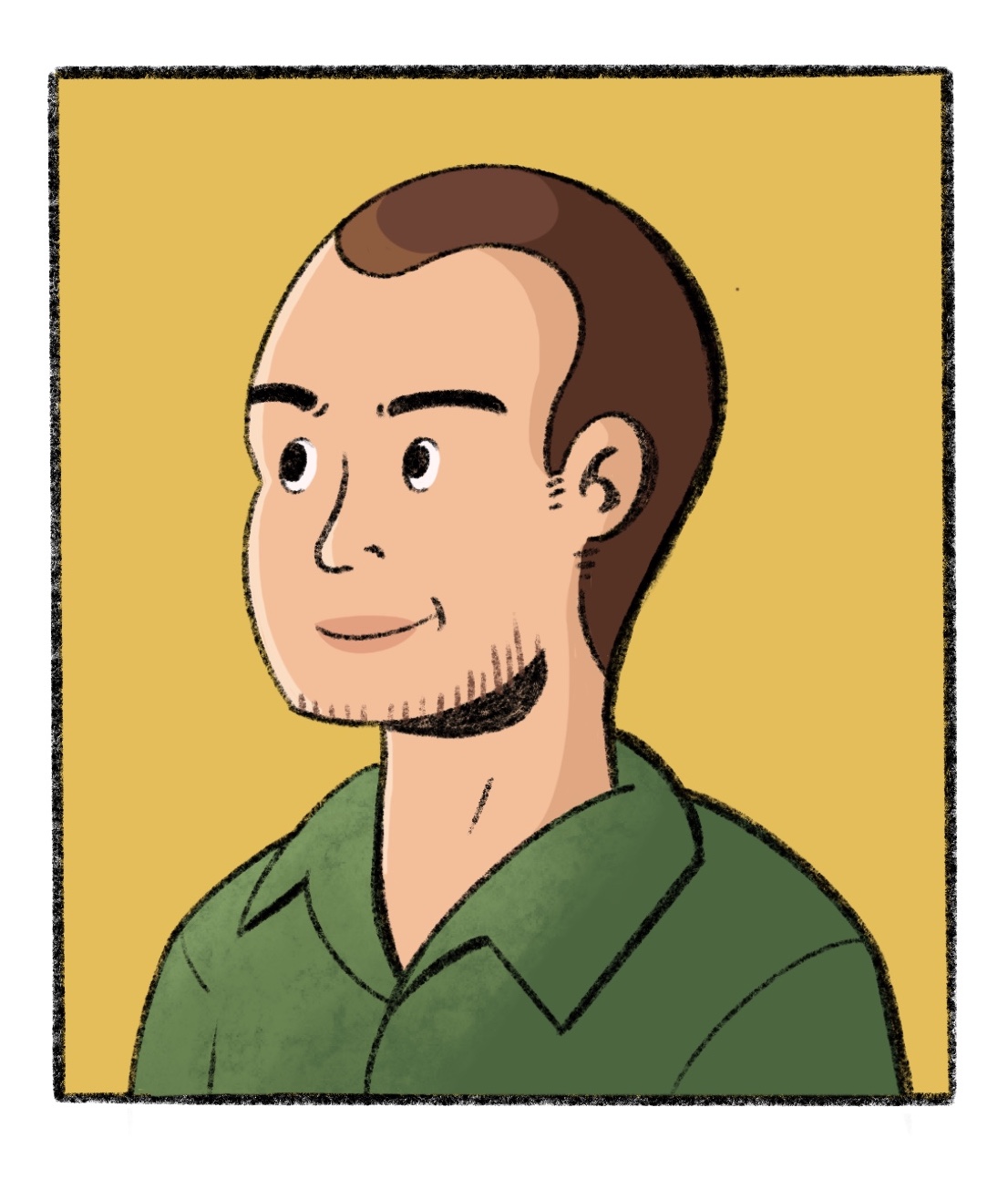If you ask researchers why they work at Michigan State University, a couple of common answers are the people who work here and the size of the institution.
There’s an appetite for collaboration and an expansive range of expertise, enabling people from disparate fields to come together and forge transformative connections.
Where else but a place like MSU — a university known for its leadership in education and plant research — could educators and plant scientists - in this case EEB core faculty member David Lowry, an associate professor of plant biology - connect to reshape science curricula?
And this particular collaboration isn’t just helping students get a better understanding of biology. It’s turning them into young scientists — perhaps only during class, but still long enough to help them change the way they see the world and themselves.

It doesn’t take long to see that the curriculum born from this collaboration makes for a much different experience than the high school biology classes of yore. For starters, it has a comic book for a workbook.
Secondly, students are getting their hands dirty growing plants called yellow monkeyflowers that MSU researchers are actively studying. The high schoolers are asking some of the same questions professional plant scientists are trying to answer.
This curriculum is designed to make the idea of science as a field of study and a potential career path more accessible to teenagers.
“We’re getting them engaged with science in science practices, not just having them learn about science,” says Hildah Makori, who joined the CREATE for STEM Institute at MSU as a postdoctoral research associate and curriculum specialist in 2021. “They learn to look at things differently. That’s a lifetime impact.”
The institute’s name is an acronym for Collaborative Research in Education, Assessment and Teaching Environments for the fields of Science, Technology, Engineering and Mathematics.
Collaborative in name and in nature, CREATE for STEM is operated by the College of Education, the College of Natural Science and the Lyman Briggs College in coordination with the Office of the Provost.
The institute’s high school STEM curriculum is part of the Health in Our Hands program, which CREATE for STEM runs with support from a National Institutes of Health Science Education Partnership Award. Now in its third round of funding, Health in Our Hands is helping schools implement and meet modern science education standards that were finalized in 2013.
Under these standards, students are encouraged to ask questions and challenged to find answers with teachers providing support, guidance and resources as needed. In a way, the standards give students the keys to start investigating like scientists and thinking of themselves as scientists.
Health in Our Hands then helps them drive with a comic book that serves as a sort of roadmap.
Idit Adler, a former postdoctoral researcher at CREATE for STEM, came up with the idea for the “Mystery of the Monkeyflower” story and comic. She also helped launch the project and develop its original curriculum.
The comic book’s main characters — a pair of young field scientists — invite the high school students to help with plant research inspired by a real project at MSU. The students grow their own yellow monkeyflowers and then observe, hypothesize and experiment as they learn about genetics, evolution and how those interact with the environment.
While teaching science content in a new way, Health in Our Hands also wants to share the idea of science as a tool and a potential career path with students who haven't necessarily seen it as anything more than a school subject.
Currently, Black and African American individuals comprise less than 10% of the nation’s STEM workforce. In its latest iteration, which began in 2019, Health in Our Hands has been working with communities in Genesee County, including Flint, where more than half of city’s residents identify as Black or African American.
The team needed a scientific topic that students would find engaging.
Look closely enough and there’s a bit of luck in every science story. For Lowry, that luck shows up in the prologue. And it wasn’t entirely good.
Before joining MSU in 2014, Lowry earned his doctorate studying with a pioneering monkeyflower expert named John Willis at Duke University. But back when Willis was earning his own doctorate, he was focused on a different plant.
One day, as the story goes, Willis’ parents visited him and he took them out to the field to show them his research plot. To his dismay, his plants had been trampled by an elk.
Looking around, though, he saw a healthy yellow monkeyflower, the Mimulus guttatus, and decided to pivot his research project. The rest is history.
“He decided to really pursue it,” Lowry says. “When I came to work for him, he said we’re going to make monkeyflowers the next Arabidopsis.”
Arabidopsis thaliana, also known as thale cress, is the model organism when it comes to plants. Scientists have studied it for more than a century and much of our understanding about plant genetics has its roots in Arabidopsis research.
Saying his team would bring monkeyflowers to this level was a big claim, but Willis and the scientists trained in his lab have backed it up.
“He never looked back,” Lowry says. “In the 20 years since coming to his lab, we really have turned monkeyflowers into an amazing plant for genetic studies.”
Now, leading his own team at MSU, Lowry is expanding the set of questions that science can ask of monkeyflowers. One of their latest questions is about how monkeyflowers have adapted to grow near salt water.
Salt is notoriously bad for plants, but certain species have evolved to thrive along ocean shores. Yellow monkeyflowers are one of those species, and the salt-tolerant versions of the plants are distinctive. They also look different from neighboring monkeyflowers that grow far enough away from salty ocean spray.
Lowry’s lab has an ongoing field study in California to explore why. But, as is often the case, addressing that simple question would require answering a host of more intricate queries.
For example, how do coastal plants know they’re on the coast and not inland? What’s enabling the coastal plants to shield themselves from sea salt? And how does all this show up in the plant’s genetics?
Serendipitously, Lowry met Bayer and her team just as his lab was starting to explore these questions and Health in Our Hands was getting ready to dive into its newest chapter.
Before meeting Lowry, the Health in Our Hands team had already been developing lessons and resources to help teachers implement the new science standards.
The team had started with middle school, implementing impactful changes to life science curricula by working with community partners. That includes the school community — teachers, students, parents — but also health professionals, faith leaders and more. These partnerships directly led to the topics that Health in Our Hands chose to explore.
“People learn best when they’re studying something that concerns them,” Bayer says. “Our partners help us in many ways, including finding what topics to study. They identified diabetes and substance use disorder.”
One of the broad areas of instruction in the modern standards is teaching how things grow and develop. A component of that is looking at hereditary traits and those that can be affected by the environment.
In the Health in Our Hands program, middle school students now meet these ideas in the context of diabetes, which is influenced by both family history and dietary factors. Next, they delve deeper into genetics through learning about substance use disorder.
“Our curriculum builds on itself in terms of complexity,” Makori says. “For high school, we move them to the next level to start thinking about evolution.”
The question was which topic could take them to that next level. By connecting with Lowry, the team now had access to a plant that was literally developed as a model to help answer genetic questions, including those related to evolution and adaptation.
Clearly, monkeyflowers don’t present the pressing public health concerns that diabetes and substance use disorder do. But the team kept important social concepts, including representation in the sciences, at the fore with classwork and the comic book that aided instruction.
On top of that, the team saw how the topic could keep students in the driver’s seat of their learning experience.
“It’s sort of this mystery project where the characters in the comic book are trying to figure out why the plants are different,” Lowry says. To help the characters out, students start growing monkeyflowers in their classroom where they can set up different experiments to test their ideas.
“Then the students interact with the characters observing differences in the plants and writing hypotheses about how they’ve adapted, just like we would do in the lab,” Lowry says. “The students are doing fundamental science and inquiry-based research.”
Read the fully story in MSU Today.



